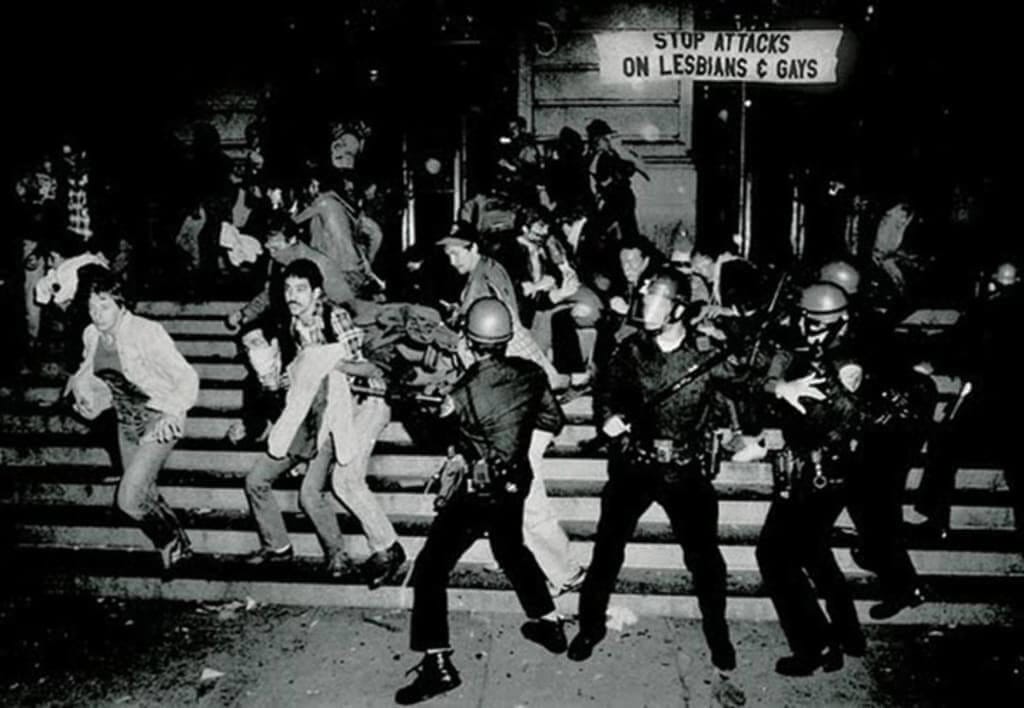- Queer Word
- Posts
- 🪵 Coming Out of the 'Woodwork' 🪵
🪵 Coming Out of the 'Woodwork' 🪵
an almost-forgotten term for disappearing without a trace
QUEER WORD
WOODWORK

What It Means:
In older trans community slang, to go woodwork meant to blend into society after transitioning so completely that no one knew you were trans — not your coworkers, not your neighbours, sometimes not even your partner. The idea comes from the idiom ‘fade into the woodwork’, meaning to vanish into the background.
Let’s Use It In A Sentence:
Jenny went so deep into the woodwork that when her neighbour started complaining about 'all these trans people these days,' she just nodded along while mentally scheduling her dog's next walk to include a strategic stop by their prized petunias.
A Little Bit of History
The prevailing wisdom seems to be that, following the Stonewall Riots and the rise of the modern LGBTQ+ rights movement, we were all encouraged to 'come out.' Be visible, take up more space, help 'normalise' (ugh, I hate that word!) queerness, and strong-arm our way toward equal rights.

The Stonewall Riots
But, while gay men and lesbians were being told to come out, make noise, and kiss each other in the streets, trans people were being given the exact opposite instruction.
Not just ‘keep your head down’ or 'don't draw attention to yourself.' No, no, the advice was much more extreme: change your name, move cities, burn the photos, and for the love of all that's holy, never breathe a word about being trans to anyone.
And the trans community, being nothing if not linguistically dexterous, had a perfect phrase for this disappearing act.
But, Before We Get In To That… Why Was This the Norm?
This wasn’t just about personal preference or bowing to social pressures; it was policy.
Since the medicalisation of transition, this was standard advice from medical professionals: undergo your surgeries, then do all you can to vanish. Blend in so completely to cisgender society that no one would ever guess.
And, in some twisted way, I can kind of get this iffy logic. But, anyone who has ever kept a major secret about their identity (and I’m guessing that’s one or two of you!) will know how completely corrosive and poisonous it can be to carry something that monumental alone.
Then, on top of that, to be completely cut off from your support network? Ugh, I can’t even imagine.
Doctors framed it as ‘protection’ from discrimination, but in reality it just fed the social fantasy that trans people didn’t exist, shielding cis people from having to see the diversity of the world as it actually is.
There were exceptions, of course. Christine Jorgensen made a good career out of being ‘The GI Joe who became GI Jane’, and Sylvia Rivera and Marsha P. Johnson were blazing trails as trans rights pioneers after Stonewall. But they were rare.

Renée Richards
As tennis player Renée Richards - who famously won the 1977 case allowing her to compete in the US Open as a woman (yes, depressingly, we’ve been having that particular argument for nearly 50 years) - shared:
"In my day, of course, everything was done secretly and quietly, and if somebody went through the transformation, they did it privately.
It was called 'woodworking': You merged into the woodwork after your transformation and you tried to lead a new life without people knowing what your previous life had been.
And that's what I tried to do.
I changed my name, I moved three thousand miles away, I started my new life. I was taken care of by my friends and by my employer, who took me on as an assistant ophthalmologist.
I tried to merge into the woodwork, and my undoing came when I played in a tennis tournament in California.”
It was assimilation as survival.
But it was also as erasure.
So How Did This Whole Vanishing Act Get Its Surprisingly Poetic Name?
No one’s quite sure when it first popped up, or who said it first (as per usual!), but going woodwork is lifted directly from the English idiom ‘fade into the woodwork’, meaning to become inconspicuous or to vanish quietly into the background.
The trans community simply borrowed this perfectly apt phrase to describe people living fully in their gender without announcing their transness to the world. Someone who’d gone woodwork passed as cisgender and stepped away from openly trans spaces.
But, just as it’s possible to ‘fade into the woodwork’, it’s also possible to ‘come out of the woodwork’, which is precisely what started happening as trans activism gathered pace. People began stepping back into the light to advocate, mentor newcomers, and reclaim their stories.
From Woodwork to ‘Stealth’
By the 1990s, woodwork was largely replaced by the term ‘stealth’.’ Both mean essentially the same thing: living as your authentic gender without disclosing your trans history, blending seamlessly into cisgender society.
And, yet, there’s a subtle difference. Woodwork carried this expectation that disappearing was what you were ‘supposed’ to do. ‘Stealth’ frames it as one option among many, not the only path to respectability.
And Then The Internet Happened…

simpler times!
We live in a completely different world now. The internet made total disappearance nearly impossible (there's always a photo somewhere), but it also connected trans people in ways that were previously unimaginable. People started finding each other in forums and chat rooms, and started to question whether disappearing was actually the goal.
These days, no one’s pretending there’s one ‘right’ way to be trans. Visibility and privacy are both valid choices, each with their own risks.
But I think it’s important to remember woodwork. It’s a reminder of how recently trans lives were meant to be invisible, and how visibility, for all of its complications, is still a relatively new luxury.
Have you ever heard the term 'going woodwork' before? |